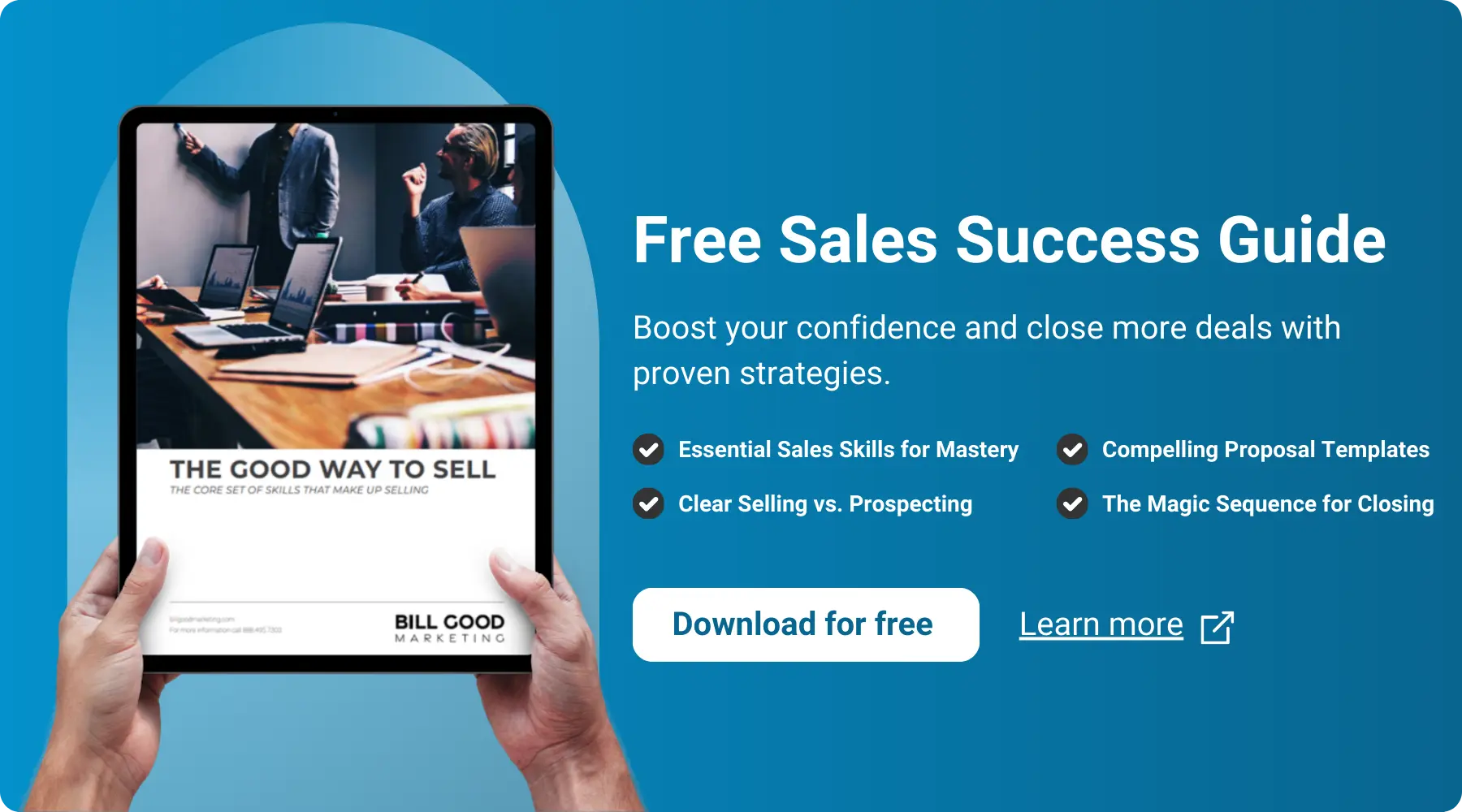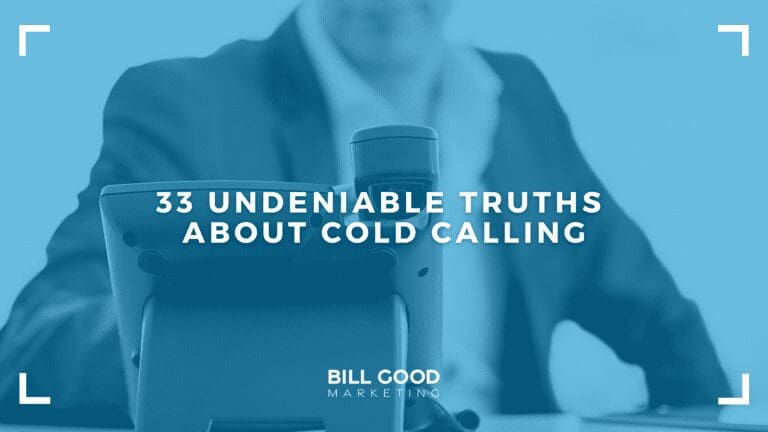In this list of “undeniable truths,” we are assuming you have a basic knowledge of lead classification and pipeline management. These same financial advisor cold-calling tips do not necessarily translate to a cold email campaign.
Cold-Calling Terms Defined
Hot Prospect: Someone very interested, financially qualified, and willing to begin the sales process by setting an appointment now. No appointment = not hot.
Cherry: A prospect who is interested, financially qualified, and willing to receive investment literature. Mostly, your cold-calling should focus on finding cherries because cherries, properly developed, become hot prospects.
A Cherry is someone who is interested and financially qualified NOW. They just need a few more follow-up calls to get them into the Hot Prospect category. That warming typically takes two approaches: they need more information, or they need a better personal connection with you.
We call this grade a “Cherry” because somewhere along the road, Bill was trying to pry people loose from the habit of endlessly jabbering at anyone with a pulse. He had the concept that some prospects were worth spending time with and others weren’t. One day “pick the cherries not the pits” sprang to mind, and this type of prospect has been a “Cherry” ever since.
PITS: If a Cherry is a potential client, then a pit is nowhere near that. A pit is someone who is not qualified, not interested, and sometimes not even nice. Don’t waste your time trying to bring this person around. We call it pit polishing, and there is no greater waste of your time.
Now that we are on the same page with terms, here are the 33 Undeniable Truths.
33 Undeniable Truths about Cold-Calling
- Skillful cold-calling works today—in some markets, not all.
- Sloppy, poorly conceived, badly written cold-calling scripts for financial advisors don’t work in any market.
- The markets in which it does not work are highly resistive. Spend an afternoon cold-calling doctors. You’ll see what I mean.
- There are many causes for failure. Toward the top of the list is “pit polishing.” You, the salesperson, continue to talk and talk and talk long after it’s clear that the person is not interested.
- It generally takes less than a minute to find out if someone might be a prospective client.
- If you find you are making long-winded sales pitches, you are pit polishing.
- In calling business owners today, you need to be making 50–70 sales calls per hour. Aside from poor scripts, this is the biggest reason cold-calling often fails. There are not enough Cherries out there to make fewer calls.
- It should take less than 500 calls to determine if this campaign is not working. It can take some weeks to verify that the leads generated from this cold-calling effort do, in fact, close.
- A “working” campaign is defined as 2–3 Cherries per hour, with a decent number of them opening accounts within three months.
- The biggest mistake rookies make is to get a bad idea and stick to it. For years, we have referred to this as “Basic Mistake #1.” We once rescued a rookie who had been using the same tired cold-calling script for a year. Yet he persisted. This mistake has destroyed more rookies in this industry than anything else.
- Basic Mistake #2: Get a good idea and change it.
- The easier a list is to get, the more financial advisors will have it, and the less likely it is to be any good.
- A good list is any list that will generate 2–3 red prospects an hour. Part of that measurement is how many bad numbers you dial.
- At least half of the success in cold-calling depends on the list. Another 50% depends upon the script. And the remaining 50% is numbers, sound, time of day, pacing, momentum, and energy. Yes, I know these don’t add up, but you get the idea.
- Very few people invest more than a phone call to a list broker to generate the list, which will account for half of their success.
- A list that you develop yourself will almost always out-produce a purchased list. EXCEPTION: Your LinkedIn connections or social media friends do not count as a list you develop yourself. Quite the opposite, actually.
- Of all the things that can go wrong with a campaign, a bad script is the most common.
- The “worst script award” always goes to: “I’m calling to introduce myself and let you know blah blah blah financial services.”
- The second worst script goes straight for the appointment, often apologizing first for taking the prospect’s time. “Mr. Loblaw, I hope I didn’t catch you at a bad time. I specialize in helping my clients build a robust retirement plan. I’m going to be in your area next Tuesday. I have a financial planning spot at 2 o’clock and another one at 4 o’clock in the afternoon. Which of those would be better for you?”
- A terrible approach is “consultative cold-calling.” In this approach, you are taught to probe for pain points and then set the appointment. People who tell you they are successful with this approach are doing something else.
- Handling objections when financial advisor cold-calling is a colossal waste of time. Cold-calling is not a sales process. When you are cold-calling, you are looking for one thing, and one thing only: someone who is already interested. Nothing more.
- As a prospector, you are trying to find good prospects, not make them. The answer to: “I’m not interested, I already have a financial advisor, I’m all set, I’m busy…” is one word: “Thankyouverymuch.” Hang up. Move on. Don’t worry about rejections. Relish them. They will get you closer to your goal of finding interested prospects.
- Every script has a value proposition – an offer. It’s how you appeal to someone’s self-interests. The worst offer is a service you can perform. Better is a strategy. Best is offering information on a product people will know something about. (I know the objection: what if the product isn’t suitable? Response: we are not trying to sell on the first call. We’re trying to find someone who is interested in something.) Floating a product idea by someone is probably the least invasive offer you can make.
- The more general a script, the more likely it will fail. “I would like to share a few ideas with you, [Prospect Name] about investments” is a featherless turkey.
- Where possible, select a list on which word of mouth can occur. Consider trade associations, employees at the same company, and even people on the same block. Then, as you begin opening accounts on this list, you can ask for introductions to people you have already promoted to.
- People are more likely to be interested in something they know. Specificity makes the very best cold-calling scripts.Suppose you pick up a list of highly compensated employees at the local branch of XYZ, Inc. You have a client there, and you are able to get the 401(k) menu. This script would have an excellent chance of success: I have prepared a special report on the menu choices of the XYZ 401(k) plan. Some of the choices are quite good. Others, not so much. It may defeat your financial goals if you are invested in the “not so much” category. May I send you this report?”
That script works so well that you could even leave it on your prospect’s company voicemail.
- There is a momentum to cold-calling. Let’s say you’re going to cold-call highly compensated sales reps at small businesses. Set aside at least two hours a day, and don’t do anything else. Granted, there will be exceptions. But a few months of cold-calling will produce a wealth of leads—assuming you are not committing “Basic Mistake #1.”
- A big challenge will rear its head when this lead generation starts to work. Now you have meetings, proposals, and investment plans. Naturally, the first thing you do is stop your successful cold-calling. Soon your pipeline is as dry as a bleached bone in the desert.
- If you do not have a system in place to manage your leads, your pipeline will fill with pits. You will become so discouraged you will stop prospecting.
- Your active pipeline consists of cherries, hot prospects, active prospects, and what we call a “board.” These are names you have put on your mental whiteboard as “likely to close on a certain date.”
- Your single biggest mistake in developing red cherries into hot prospects, and developing active leads into sales, is failure to set the next appointment. Asking for the appointment forces out the “false cherries”—pits disguised as cherries result in pipeline bloat. It will destroy your time and, therefore, your business.
- Your active pipeline should not be too big. We have invested a lot of research into this and are confident enough of our estimates to share them with you.
- Red Cherries. Around 25. Let’s say you want two first appointments a week. You should be able to get that from 20–25 red cherries. If you have 50 red cherries, you cannot possibly follow up on them. They will grow cold. Or they are false cherries. (Don’t let someone remain a red cherry for more than two or three weeks. Bottom line, move them on to hot prospect or move them out.)
- Hot Prospects. Less than 10. A “Hot Prospect” is someone who has set but not yet kept a first appointment. You might have two or three scheduled for this week and next week and another few scattered out over the next several weeks.
- Active Prospects. Less than ten. Today, it takes 2–4 appointments to get an account closed. How many can you deal with?
- Board. 2–5. These are potential clients who should be closing in the next 2–3 weeks. You won’t get them all. But if you can open 2–3 new accounts per month, you are hot. Survival is assured.
- Keep statistics. By knowing what is working and, more importantly, what is not, you can avoid being impaled on “Basic Mistake #1.”

So, there it is – the 33 Undeniable Truths About Cold-Calling.
One final cold-calling tip to help you along:
Cold-calling can feel a lot like dialing for dollars. It can be a remarkably powerful prospecting tool.
But only if you follow this rule: Look for people who are interested and qualified right now. Ignore the rest.
Reject those who do not meet your criteria. Simple and very powerful.
The remaining problems we see financial advisors report are:
- Succeeding.
- Finding interest.
- Good scripts.
- Getting to the decision-makers.
- Setting appointments.
- Great lists.
And they are topics for a different article. If you find success using any of our cold-calling resources, we’d love to hear your success story!




